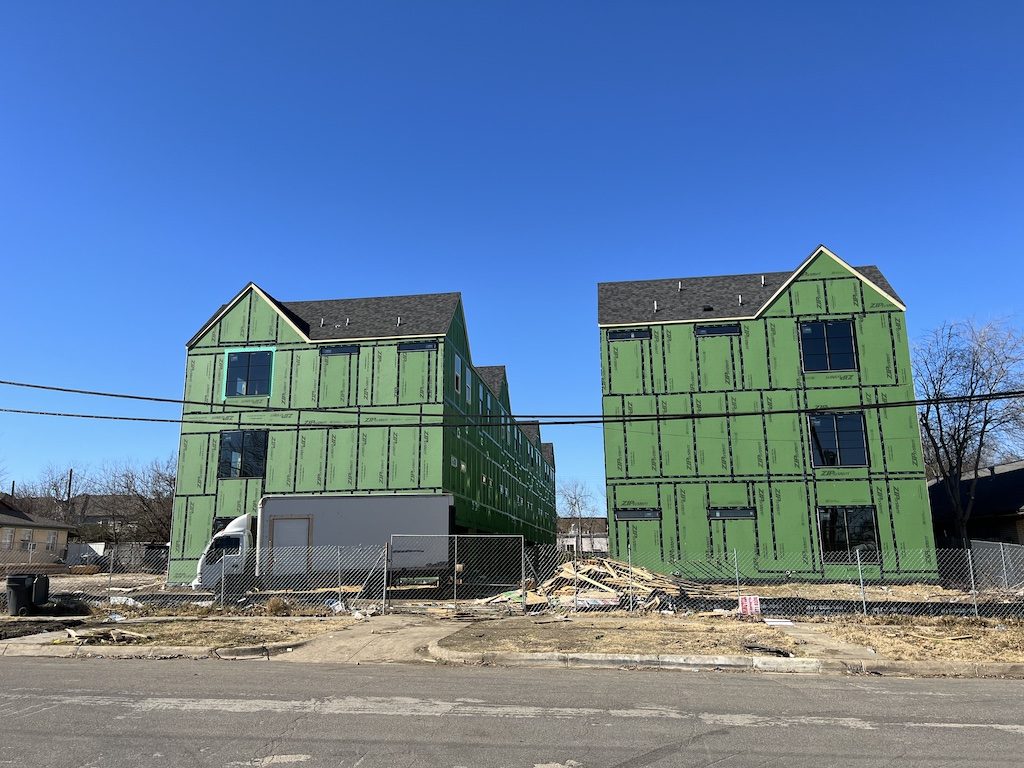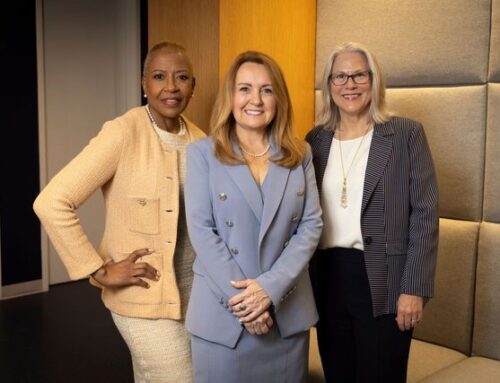
Apartments under construction in Dallas. Advocate photo.
In a new series exploring America’s housing shortage, land use and housing potential, researchers at RentCafe — an apartment search website that collects and analyzes data on rental housing — address Dallas’ situation.
The Unlocking Dallas’ Housing Potential study shows we have 475 unused plots of land already zoned for multifamily use.
But for various reasons Dallas has been adding relatively little housing, despite a great need for it.
That unused land could house up to 100,000 new apartments, half of which would be located in the heart of the city, they say. The number is more than the total number of apartments built in Dallas since 2000.
Dallas has the largest homeless population in Texas, a severe shortage of housing units and need to construct roughly 19,000 apartments annually to fill the gap, particularly for low-income families, they report.
The most promising areas for building, according to the research, are in neighborhoods south and west of Downtown, ZIP codes 75201 and 75202.
75202 allows for almost 34,500 new apartments to be built on its 34 empty parcels, making it the most promising sector for new homes. Building potential in 75201, the western side of Downtown, allows for about half the amount of new apartments to be built on its 16 vacant plots.
In those ZIP codes alone, more than 50,000 apartments could be built on 2.7 million square feet, analysts summarize.
This interactive RentCafe map allows us to see all of Dallas’ untapped land, how it is zoned and how many units the parcel could potentially hold.
Lake Highland’s 75238 doesn’t make the list of zip codes with available land. 75243, which ranks 15 on the list of promising zip codes, contains seven parcels of vacant land that could become housing. 75231 has just one.
RC researchers say “strategic rezoning” could unlock even more plots citywide for housing.
Rezoning could increase the wave of new rentals far beyond 100,000 apartments, and Dallas’ construction potential would be 6.5 times greater if we included vacant land with other types of zoning, they report.
Dallas has a total of 494 million square feet of vacant land scattered around 3,152 parcels zoned for residential, as well as agriculture.
A second interactive map highlights vacant lots in Dallas and the type of land parcels that surround each plot.
What’s holding Dallas back from using this land to end the housing crisis?
RentCafe cites bureaucratic hurdles as the primary obstacle.
Phil Crone, the executive director of the Dallas Builders Association, says “process uncertainty is the largest Dallas-centric inhibitor.”
He says the City of Dallas has a backlog of about 1,000 planned developments — that developers often face monthslong delays in getting their projects approved by the city. “If we could cut their number in half, we’d really be making some progress,” Crone says.
The permitting process is estimated to take about three months, and developers report more than double the time, and it includes two public hearings.
At times homeowners and council representatives, at those hearings, have resisted residential development in their neighborhood, a phenomenon that can discourage developers, especially those proposing lower-income housing.
It’s not just here. Mike Kingsella, CEO of Up for Growth, a nonprofit committed to solving the housing shortage and affordability crisis, last year, attributed underproduction in more than 200 metropolitan areas across America to “NIMBY-ism (not in my backyard) and exclusionary zoning.”
The pandemic further slowed down the permitting process.
House Bill 14, filed in March, part of a statewide zoning reform package, allows building applicants to hire a third party to review and sign off on permits if a city doesn’t act within 15 days of state-set deadlines, and that should help move things along.
The study also explores and shows how adding housing is a good thing for anyone in the region whose earnings go toward rent.
“With a faster pace of construction — around 10,000 new apartments per year — we estimate that rents in Dallas would rise by 47% to 85% in the next decade,” a RentCafe spokesperson says by email. “However, with the current pace of 4,000 apartments per year and the same population growth trends, we’re looking at an extreme 123% rise in the next 10 years.”
To peruse this study and methodology, visit RentCafe’s Market Insights page here.





